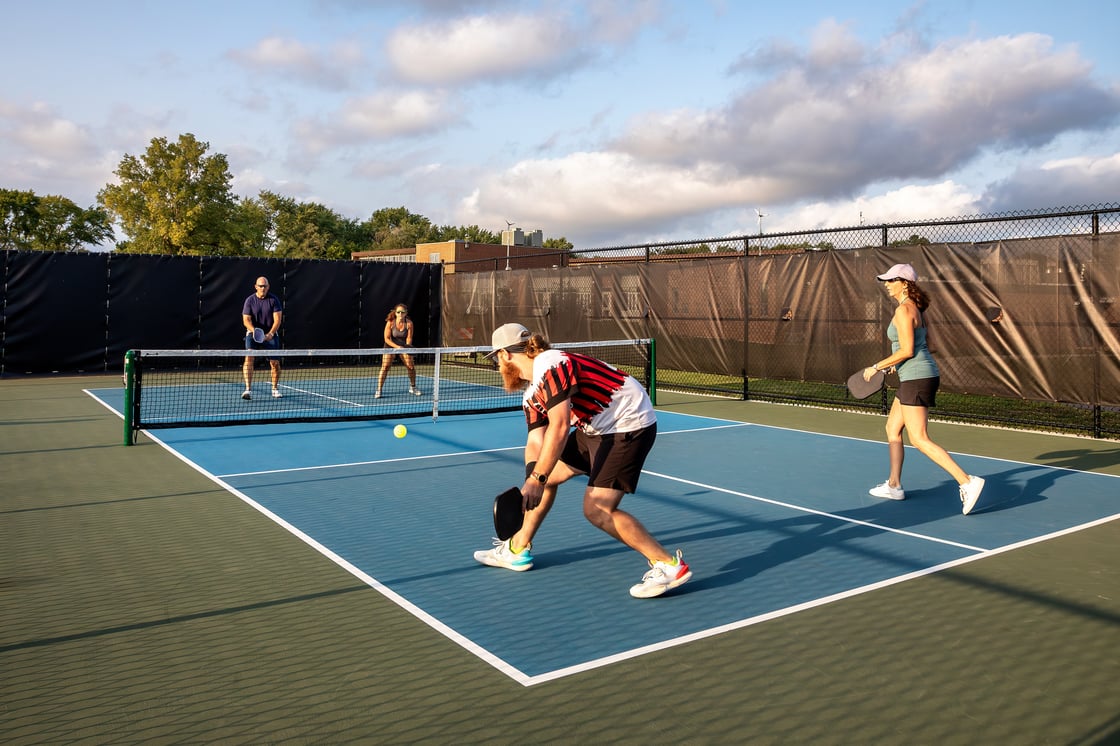It’s pretty common for people to ask “how can I play against someone who spins the ball?”.
These people are struggling to receive a serve with spin, or are playing against others who stand at the baseline and add side spin to the ball.
Although I’ve written about topspin before, there is a more in-depth way of exploring spin in the game of pickleball...
Here are some of my tips!
Types of Spin
Sidespin: the ball will travel through the air on a curve and after the bounce it will kick to one side.
Topspin: by using an upward motion on contact, the ball will brush and the ball will dip which will cause a sharper angle after the bounce.
Backspin: similar to sidespin, backspin is generated by brushing the paddle down and back against the side of the ball, it can often cause the ball to float.
When to Use Spin
On Serve: You can control the trajectory of the serve and the way the ball bounces, which will make it harder for the opponent to anticipate your shot, thus, a lighter return is often produced.
Dinking and drops: slicing the ball and adding spin can help keep the ball lower and keep the rally at a slower, controlled pace; one risk to adding topspin to a dink is that the bounce will sit high, and a risk to adding backspin when dinking is that the ball will float, which can present the opponent with an opportunity to speed up the rally.
3rd Shot Drops: Adding backspin on a backhand drop shot will effectively produce the same result as it does on a backspin dink - in that it will cause the ball to slow down and float. The advantage is that a player can control the trajectory and placement of the ball with backspin and produce a very effective 3rd shot drop.
Defense: Players will often cut or chop the ball with underspin to keep the ball low which will be harder for the other players to attack. Additionally, the longer your opponent has to wait for a ball to come to them the more recovery time you will have.
When to Add Spin
If you are a player learning how to create spin because you see other players doing it and it can really be tricky to play against, I recommend learning to incorporate spin once you have pretty much mastered the fundamentals of the game.
It’s essential to first learn foundational footwork, court positioning and strategy. Not to mention, having high percentages with regards to the basic shots: serve, return, drops, dinks, and volleys.
When you want to add variety and become less predictable to your opponents, spin is a great way to mix up the tempo of a rally or a game. Adding spin to every shot becomes far too predictable and is usually non-threatening, and can be more of an advantage to the receiver to always be handling the same style of spin over and over again;
That said, when you recognize that a person does not know how to receive spin, you should dip into that well until they show signs that they can handle it.
When you need to buy some extra time to recover or run to the non-volley line, adding spin will do just that. I particularly favour a backhand spin (or slice) return that allows me time to approach the NVL.

How to Add Topspin
You will want to use a grip that allows you to open up the paddle face by flexing your wrist, this is the first step to creating the “brushing” motion.
Make contact with the ball just above the center of the ball.
Move the paddle from low to high and keep the entire motion compressed and compact for a quick easy recovery.
How to Add Backspin
Move the shoulder across the body and keep the paddle head well above the wrist.
Open the paddle in a 45-degree angle.
Take the brushing motion from high to low and finish your follow-through, continuing along the natural path.
To slice the ball so that the bounce kicks to the side, your motion when brushing the ball should be from side to side, on a 45-degree angle.
This article was taken from our 'Control the Kitchen' Newsletter, if you're interested in receiving more content like this, please feel free to sign up using the subscribe section located at the bottom left of this page (or underneath the article if you're on mobile), thanks!